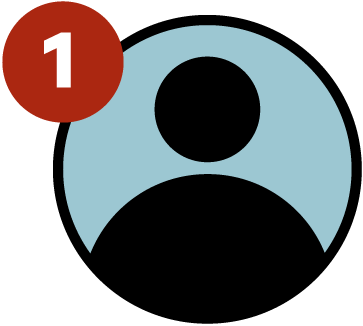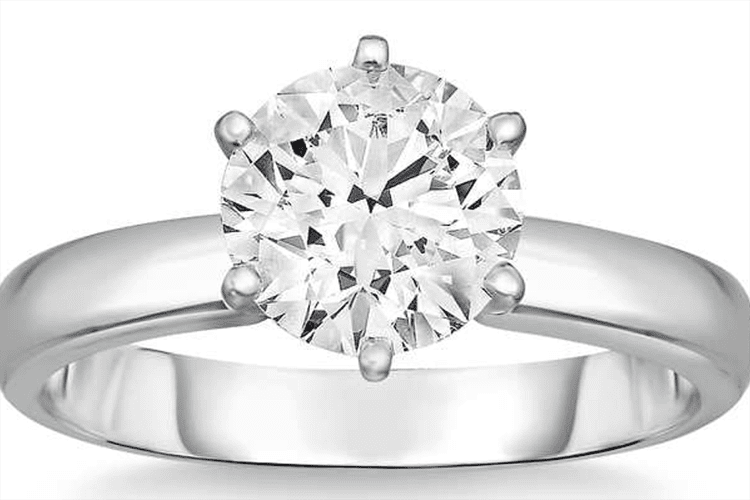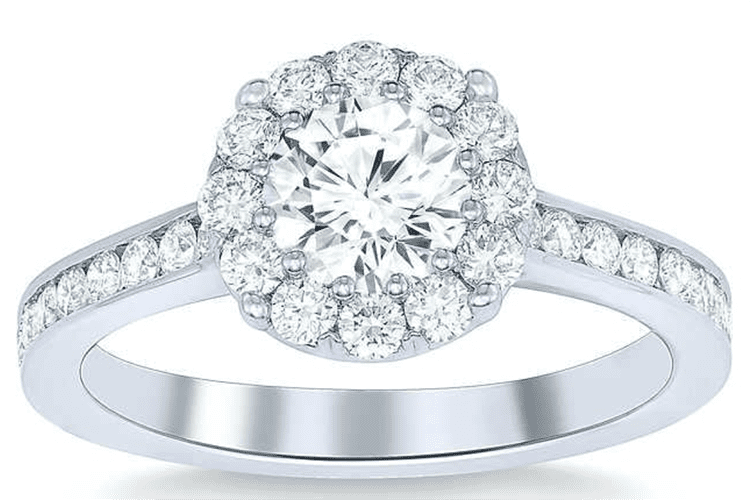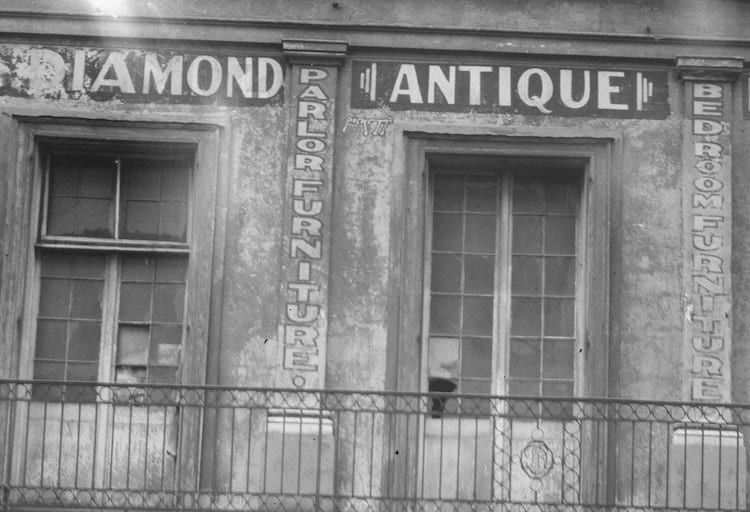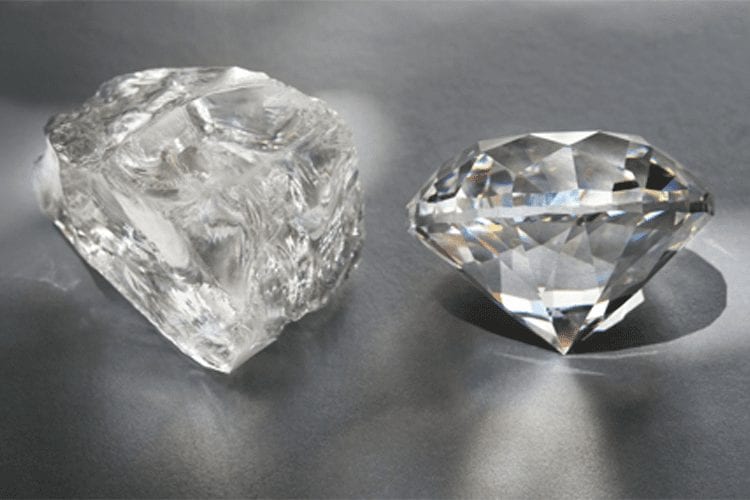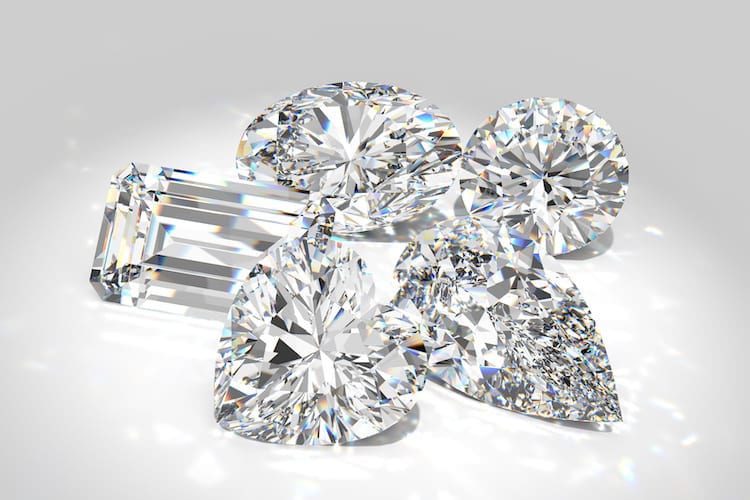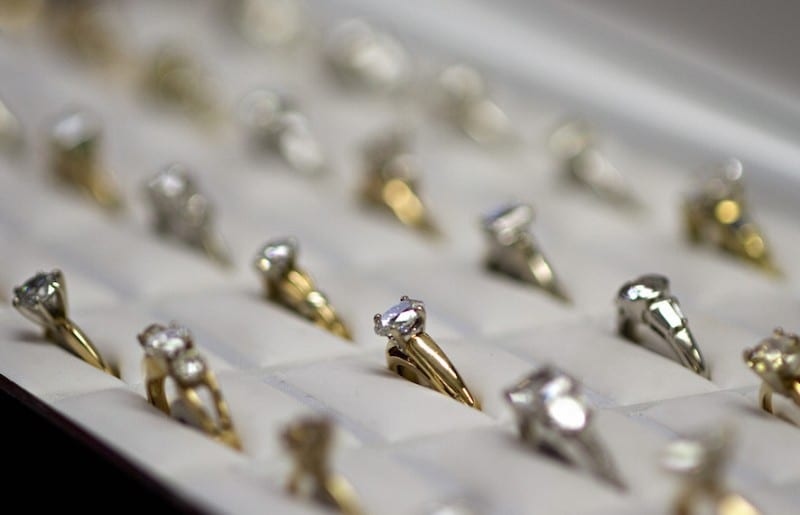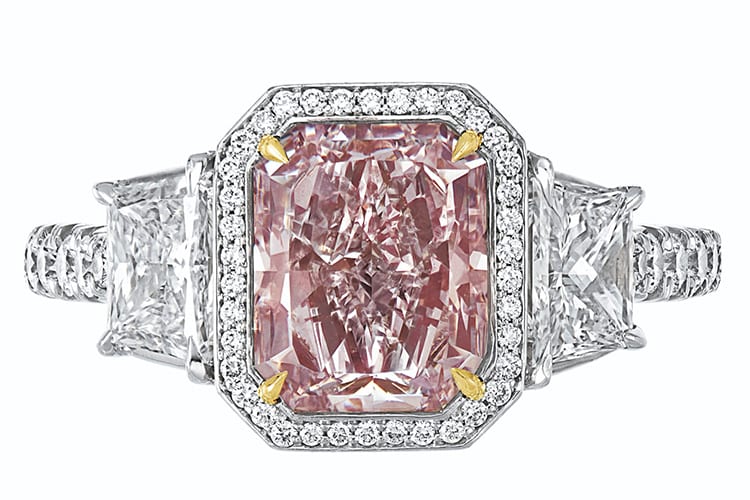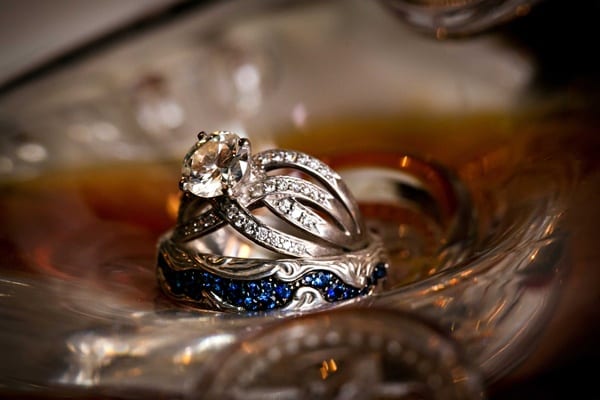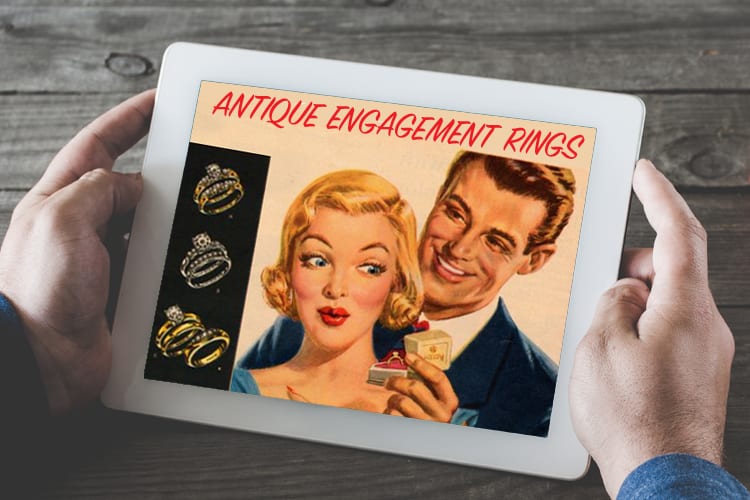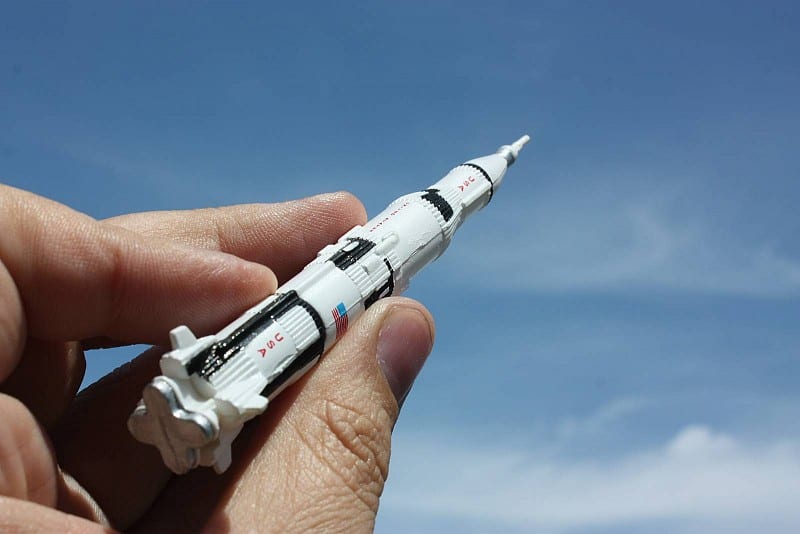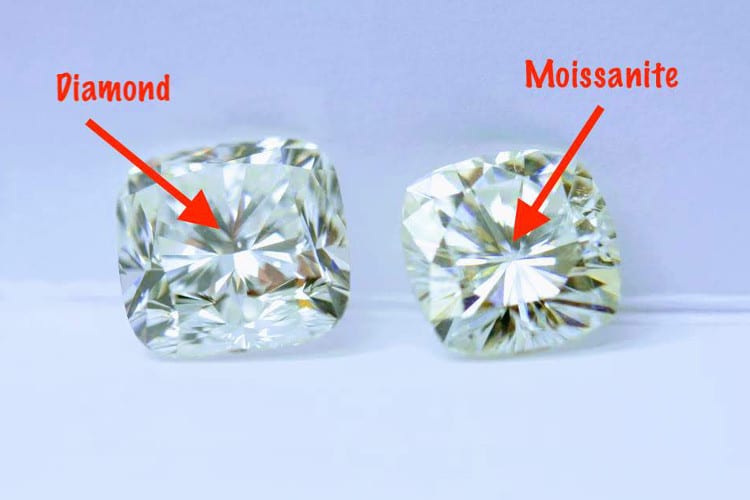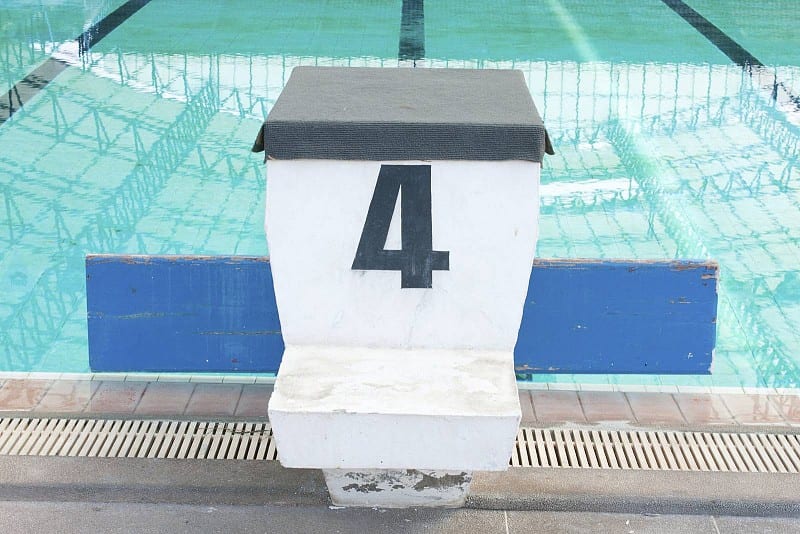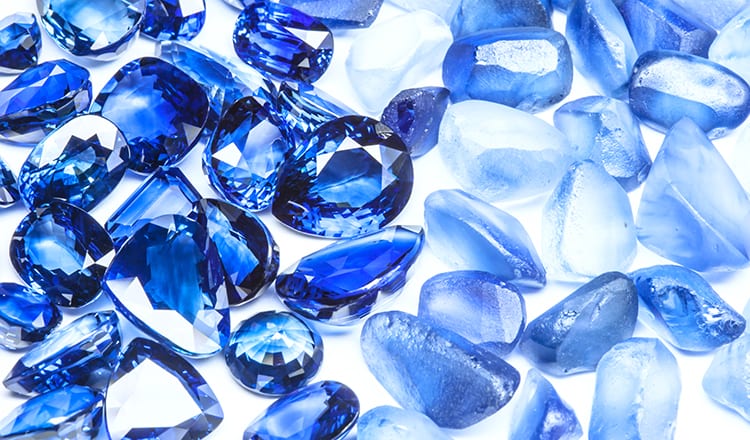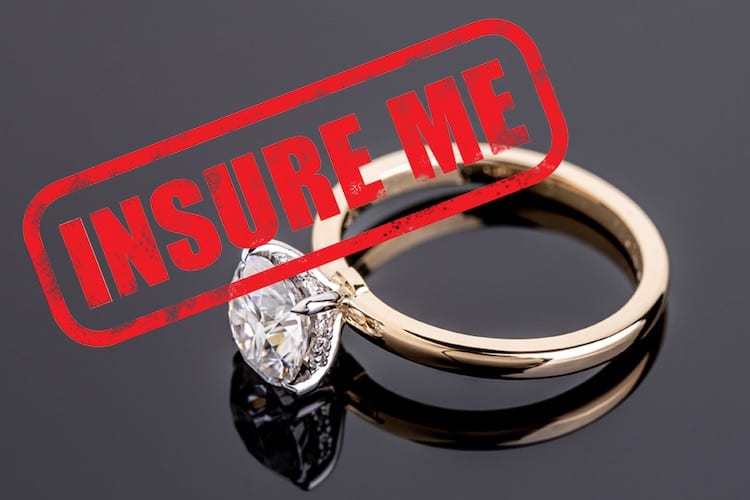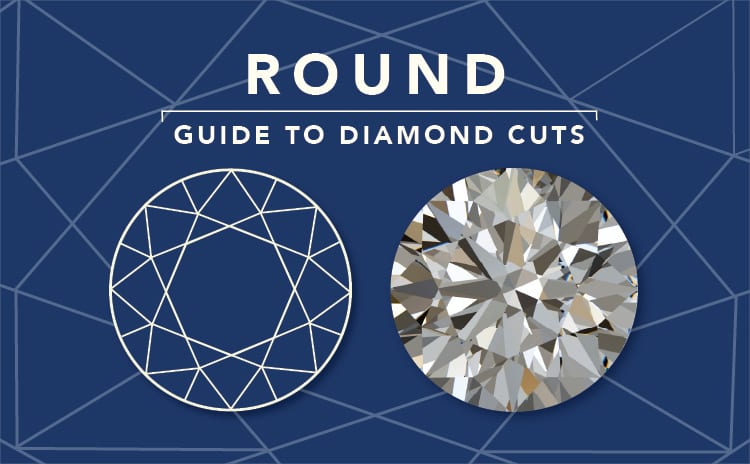
Pros/Cons of Round Shape Diamonds: It’s a common and timeless shape that looks good on many ring settings; but it can also seem boring and unoriginal compared to other shapes.
Tip 1: The depth of the diamond can have an impact on the reflection, and that’s not always mentioned in a GIA report. So look at the gem from all angles.
Tip 2: Consider a halo setting, which will make the stone seem larger and is a stylish setting option.
If you’ve started shopping for engagement rings — even casually — you’ve been inundated with round diamond rings and probably didn’t even know it. They’re everywhere! Round has been the most popular cut for diamond rings for a while and the sparkly symmetry of the “round brilliant cut” makes up two-thirds of the diamond rings sold in the U.S.
History of the Round Cut
Why is the round diamond so popular? They’ve been around forever but got flashier in the last century. Round diamonds in Victorian and Art Deco rings are usually what’s known as “Old European” or “rose cuts.” The science of faceting (cutting surfaces) became more refined after that. Today, round diamonds cut after 1930 are generally called “round brilliants.” And they have 58 facets (including the culet).
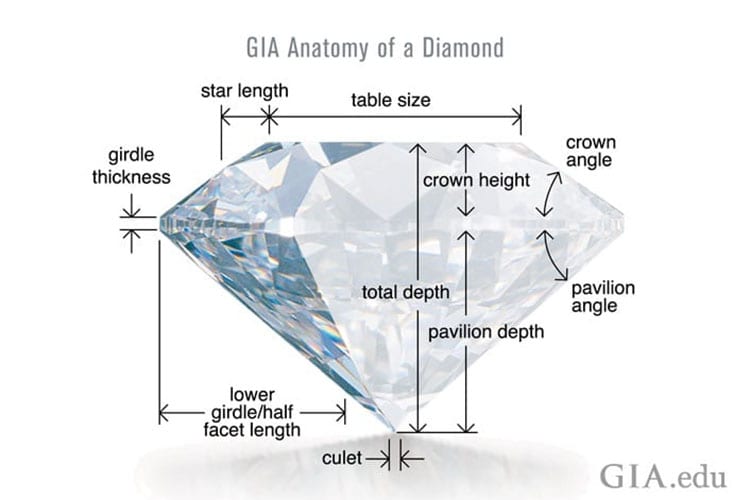
A well-faceted round cut can pack a lot of reflective punch in a modest size diamond. Round is one of best shapes for a diamond of a couple carats or less and high-flash faceting works best on smaller stones with simple, symmetrical shapes. But old cuts have made a comeback in recent years and some women prefer the softer look of recycled rose cuts. (Below: 18K bezel-set round rose-cut diamond ring. Photo by Greenwich St. Jewelers)
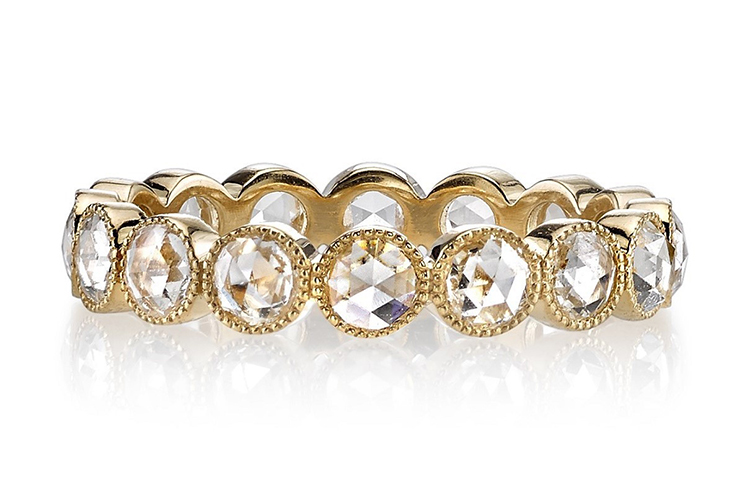
So she wants a round-cut diamond? Go to Whiteflash or James Allen to see what kinds of ring designs work best with that shape (and others). Their selection spans from vintage to modern — and across all budgets.
Famous Rose-Cut Round Diamond Rings
Round diamonds have long been a staple of engagement rings, so you’ll find plenty in both vintage and contemporary jewels. Actress Emmy Rossum of Shameless tied the knot with Sam Esmail (who wrote and directed Mr. Robot) wearing a ring made in 1920 Paris, set with a round-cut diamond accented by tiny flush-set diamonds.
Mila Kunis wears a more modern version from Ashton Kutcher, a 5-carat round-cut solitaire diamond in a platinum band.
Why Are So Many Diamonds Round?
For one thing, the perfect symmetry of a round diamond is pleasing to the eye. No distractions assuming it has good clarity and color.
It’s Versatile When It Comes to Ring Settings
A classic round diamond fits a number of styles and settings — accent stones on either side or all around, a sleek metal shank or a diamond-studded one. A ring with a classic round center stone is easy to stack with a wedding band and maybe, eventually, anniversary bands as well.
It’s the Perfect Shape for Flashy Faceting
Larger stones don’t lend themselves to brilliant cuts, nor do fancy shapes such as emerald, pear or marquise. A round diamond, on the other hand, takes perfectly to a classic brilliant cut. The blinding flash of a good diamond is best displayed by what jewelers call “total internal reflection,” and that comes from the back of the stone.
It Takes a Halo Beautifully
What shape comes to mind when you think of a halo? Exactly. A round diamond is a perfect fit for the ever-popular halo setting. A halo, that circle of smaller gems mounted tightly around the center stone, lends a feminine, vintage look. The popularity of Art Deco jewelry put the halo back in vogue a few years ago and it’s now become an engagement ring staple. Halo settings were typical of Jazz Age diamond rings but diamond “surrounds” date back even further, to Georgian-era jewels (between 1714 and 1837).
A halo is a great way to add girth and sparkle to a modest diamond for minimal cost — diamonds under half a carat are much less expensive than larger stones. If you do this with matching diamonds, the ring appears about a half carat larger for a fraction of the price of a larger center stone.
Consider the Double Halo
You can go one better and ask for a double halo. With two concentric circles of smaller sparklers, you can end up with the girth of an extra carat. Natalie Portman sports a double halo of tiny accent diamonds around her round-cut diamond ring from husband Benjamin Millepied.
Actor Dave Franco presented fiancée Alison Brie (Trudy on Mad Men) with a round-cut diamond surrounded by a pavé double halo in rose gold. The center diamond was already three carats but the double halo guarantees you’ll spot it from across the room.
How Much Does a 1-Carat Round Diamond Cost?
You have your pick of the diamond litter with this common shape, so try to start with good clarity and color. Don’t settle for less than “eye clean” clarity of SI (slight inclusions). A round VS2 (very slight inclusions) diamond with G color in a simple platinum setting will set you back about $7,500 at Costco. Take the color down to I and a 1.5 carat center stone with a diamond halo and channel-set diamonds in the shank costs about $5,000. (Photos courtesy of Costco)
Right: A round brilliant 1.50 ctw VS2 Clarity, I Color Diamond Platinum Ring. $4,999.
Don’t be a sucker: Buy rings from trusted online sources James Allen, Whiteflash, and Blue Nile. You’re guaranteed to find better and more in-depth information thanks to their videos and listing details.
Downgrade to 18k gold from platinum and you can have it for half that; 14k makes it even cheaper. Gold is not as hard a material as platinum, so the ring may need a bit more maintenance to hold its finish, but it’s a material that’s stood the test of centuries.
Once you’ve narrowed your choices to this classic and readily available shape, spend some time looking at a few in person. Ask sales staff to show you the difference between the same size diamond at various grades of color and clarity. This is the best way to understand what you’re really paying for — though you can do some comparative shopping on sites like Blue Nile and James Allen.
Below is a look at all the available diamonds that appeared on James Allen once we narrowed the field down to diamonds between 0.9 of a carat and 1.10 carat (basically just above and below one carat) and assuming the following:

Yes, there were 14,249 diamonds to choose from that met the criteria. Our next step would be to raise or lower the grade for color, clarity, cut, and carat… and to play with the price range.
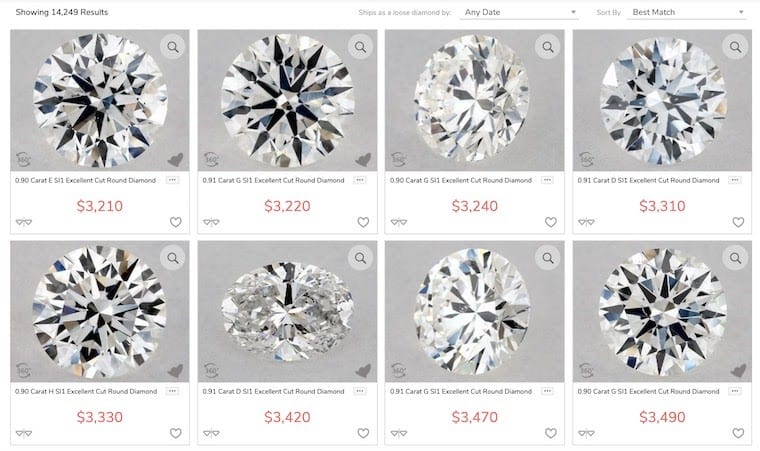
What to Look Out For
Keep an eye on the depth of a round brilliant. That GIA certificate is important, but when it comes to the cut quality of a round brilliant diamond, an excellent rating may not take that into account. You can shave off some carat weight (and lower the price) with a shallower stone but may lose some reflection, while the deeper pavilion of an older diamond can cause light to pass right through.
When in doubt, move the ring around and let your own eyes tell you how the flash compares to another stone. If you can’t tell, and you don’t think she will be able to either, you may have just found a way to lower the price.
What Are the Pros and Cons of a Round Cut?
Pros: Because it’s such a common cut, round diamonds make a great starter ring. If you find yourself flush in years to come, you can upgrade to something fancier and your bride can add the original to a ring stack on another finger. Round diamonds also lend themselves to everything from sleek solitaires with a brushed finish to vintage settings with halos to glittery stacking rings covered in accent stones. This timeless shape is likely to survive the changing tides of fashion and your bride’s own style evolution.
Con: For some, the round diamond is too common. They prefer something a bit more unique, a bit less symmetrical, something pointy perhaps like a pear or a marquise.
Bottom Line: You can’t go wrong with a classic round diamond. It’s a classic, it’s a safe bet, it’s easy to find, and it comes in a million styles.

